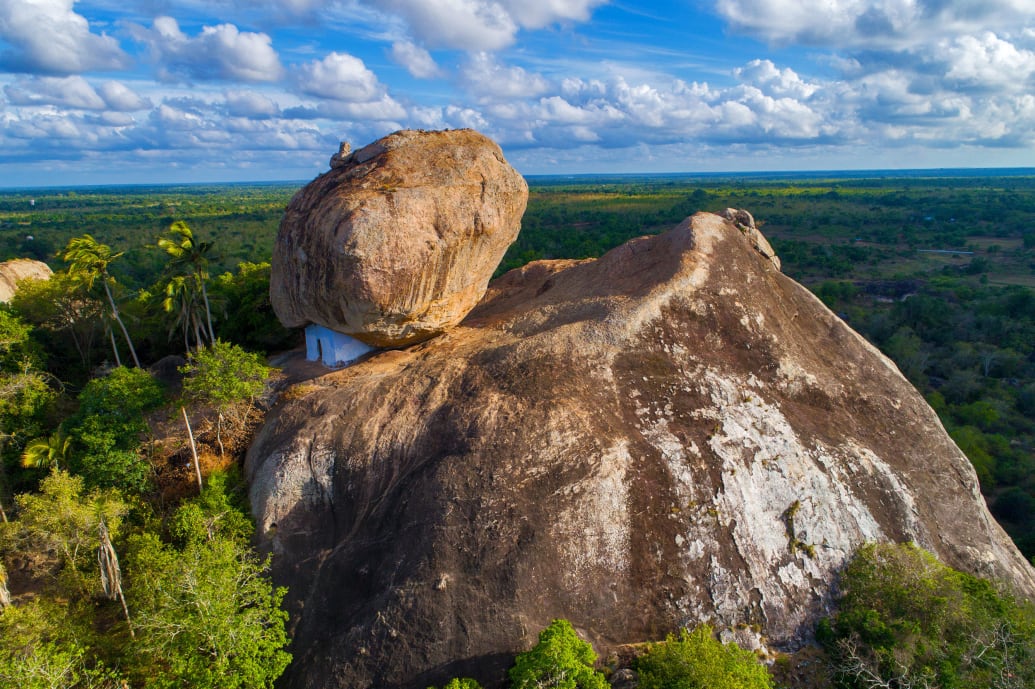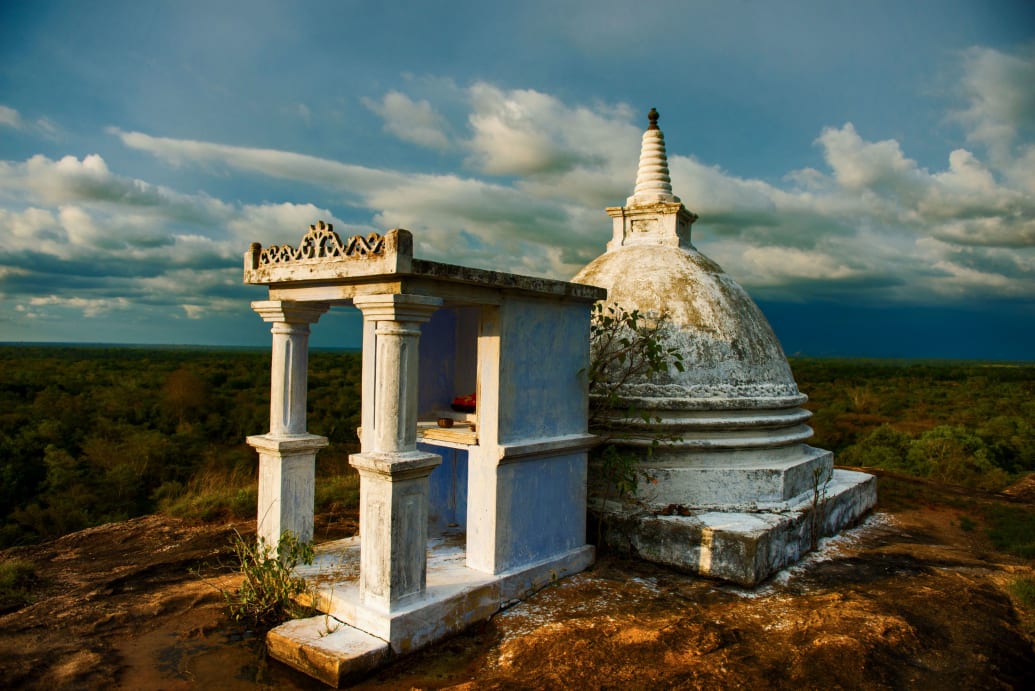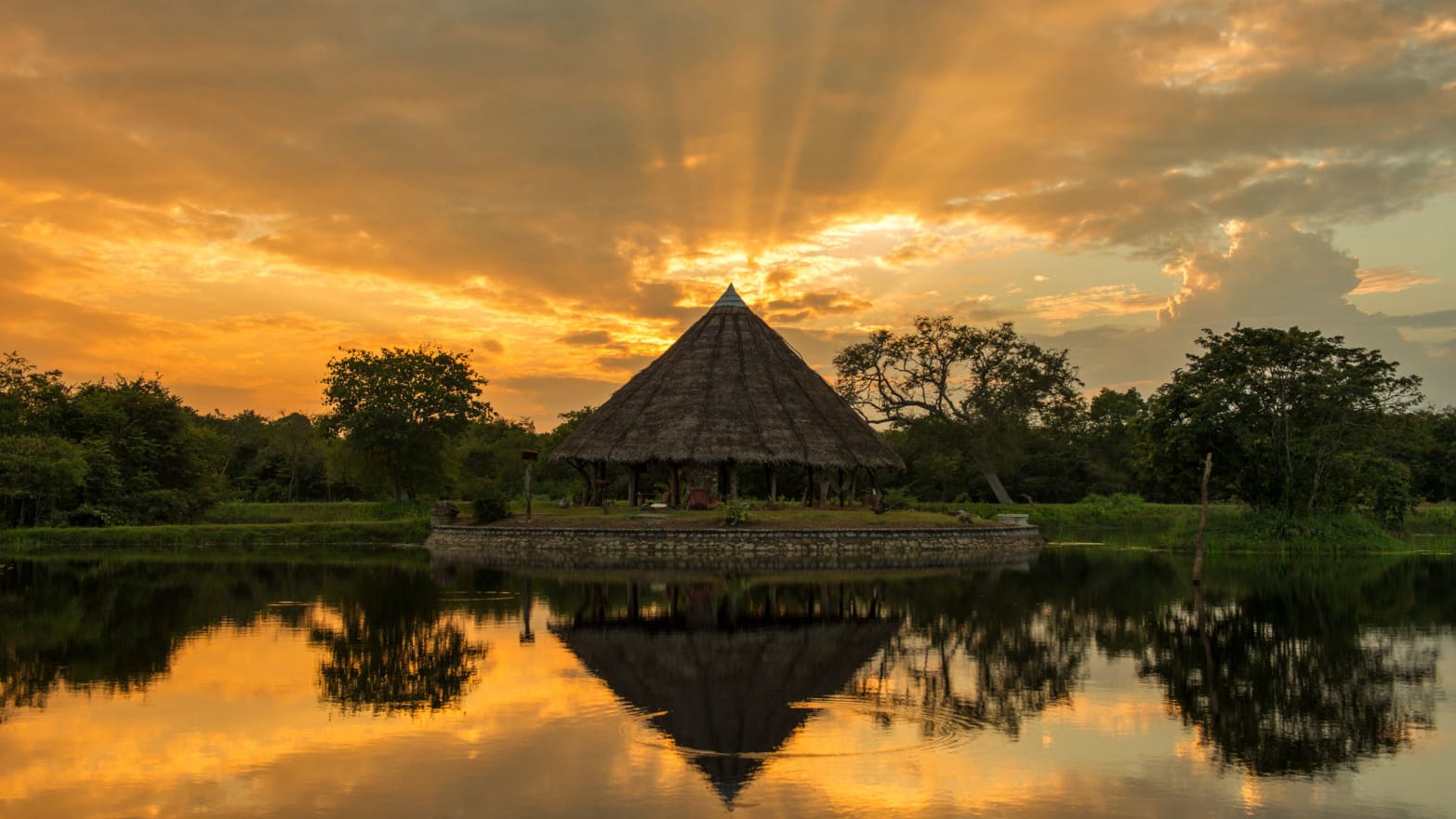I have spent a week in a mud hut in the middle of the Sri Lankan jungle. I have befriended frogs and looked elephants in the eye. I have been woken at dawn by the cacophonous sound of 100 different varieties of birds hawking 100 different varieties of bird sex. I have drifted on a paddleboard in a rainwater lake, eaten the seeds of the lotus flower, and munched my way through curries cooked on open fires made of bittergourds, snake fruit, jackfruit, taro root, and a multitude of other foodstuffs unknown to Western tongues.
Briefly, I became a better man; a man who shouts less at his kids, a man who communes with his higher power on an hourly basis, a man who reads Paulo Coehlo books and doesn’t snort with derision, who sits straight in his chair, and whose children engage in dinner time conversation rather than playing computer games and fighting.
Needless to say, the moment we got home, I was on email, my wife was on Instagram, and my son dashed into the playroom, switched on his Xbox and played Fortnite for five hours straight.
But it was a beguiling fantasy while it lasted, entirely attributable to the unique atmosphere of the place we were staying; The Mudhouse.
The seeds of the Mudhouse were planted fifteen years ago when Tom Armstrong, a young British DJ with a socially-conscious streak, came out to this then-deeply troubled part of civil war-era western Sri Lanka (Anamaduwa, 70 miles north of the capital and 20 miles inland from the coast, was claimed by the Tamil Tigers and political murders were rife) as a volunteer teacher, only to find the school he was assigned to had already broken up.
He stayed anyway, and made friends with a local man, Ranjit Kumar, and the two decided to see if they could create for themselves, as a kind of elaborate man cave, a traditionally-built house on a patch of land they acquired by the lake a few miles outside the town.
With no money for materials Kumar and Armstrong did what the locals have been doing for countless millennia; they made floors of compacted termite mud and dung, they built the frame out of rough, salvaged timbers, the rain and sun were kept off with palm thatch and the walls were built with mud bricks.
Owing to the nature of the materials used (and, as they freely confess, their lack of experience), the first structures put up at the Mudhouse lasted only a few years, but as their building skills have improved, so has the expected lifetime of the huts. Building – which is led by Kumar – can take as little as a month once a decision to create a new hut is made and materials have been foraged. Indeed, the ‘family hut’ was built after they accidentally accepted an overbooking. Not wanting to turn the group away, Armstrong and Kumar set about building a hut for them instead.
Today the Mudhouse comprises five different guest huts, along with numerous other outbuildings, scattered around a 50-acre estate, connected by winding sandy and gravel paths. Guests cycle to and fro on an army of trusty warhorses, maintained by the wiry chief mechanic Lucian, who is so passionate about cycling that he pedals the 200 mile roundtrip to Colombo once a month, despite being 74.

Armstrong and Kumar have bought land piece by piece, ploughing any profits back into the project and the wider community.
Currently, some 50 people work at the Mudhouse, with incalculable benefits for the local area.
The huge staff is needed because everything at the Mudhouse is done traditionally. Bedsheets are washed by hand, dried in the sun, and pressed with irons powered by the glowing embers of burnt coconut shells. All the food is cooked over traditional wood fires. A trickle of electricity reaches the main office, where there is also a wifi internet connection, but beyond that it’s solar energy, torches and oil lamps. One man’s full time job is to maintain, fill, light, and extinguish the hurricane lamps that dot the estate. His name is Chaminda, but everyone at the Mudhouse calls him Lighter.
The Mudhouse is located in a jungle microclimate known as the Evergreen Dry Zone and the surrounding forest—much of which exists purely as a result of a reforestation drive by the Mudhouse—is rich in birdlife, with kingfishers, egrets and swooping and diving over the lake at the front of the Mudhouse. An early morning one-hour drive took us to the Willpatu National Park, where we saw a rare sloth bear and elephants. More local excursions included a trip to the astounding Paramakanda Temple, a 2 km ride from The Mudhouse. The temple dates from the reign of King Walagamba, a few decades before the birth of Christ, and visitors can see remarkable shrine rooms with giant Buddhas. One wall has a mural boasting one of the few known depictions of hell in the Buddhist tradition. It looks unpleasant; being eaten by dogs and boiled in water by devils are among the many punishments meted out to its unfortunate stick men stars.
The temple is built under a vast overhanging rock, on which honeycombs of wild bees cling precariously, and you can walk up this and find another small temple nestling beneath an impossibly large boulder, perched precariously on a high rocky outcrop (locals say placing a stick to look like it is supporting the boulder can relieve back pain—worth a try, and so far, so good).
Dawn chorus walks, led by the Mudhouse’s local staff, are one way to experience the birdlife, another is to simply lie in bed and listen to the amazing—and at times alarming—sounds of the jungle waking up around you.
Sometimes, the jungle comes to you—be that a peacock on the roof, a frog in the shower, or a monkey at the fruit bowl (we had all three during our five night stay) but, thankfully, mosquitoes are not a big problem in this part of the country.

The Mudhouse
The ancient “tank,” as the old Sinhalese reservoir lakes are known, has now been meticulously restored, and supplies water to the Mudhouse’s organic farm while doubling up as a private swimming lake. Kayaks and paddle boards are also available for guests, and it makes a wonderful place to drift for hours on end, reflecting on the beneficence of the planet.
The real joy of the Mudhouse, however, is the opportunity that it offers the weary modern citizen to disconnect from the bullshit of modern life. Phones, deadlines, and email disappear (and so, albeit illusorily, does money, as everything is included in the $180 per person rate, and paid before you arrive—and tipping individual staff members is discouraged).

I must confess, my two oldest kids (12 and 11) weren’t particularly excited about the idea of spending 6 nights in the jungle with no wifi. The four year old sought to emulate their outrage and disgust.
But less than 24 hours offline, something magical happened. They became kids again. We’d lie in bed in the mornings and hear them outside playing catch, king of the hill, and organizing bike races.
Back home, life swiftly returned, as I suppose it must, to normal.
With one exception.
Five hours after logging on to Fortnite, my son stood up, switched off and announced it was rubbish.
He unplugged the Xbox and sold it online the next day.
That was almost a month ago, and he hasn’t mentioned it since.
I only wish my own Mudhouse transformation had been so permanent.

